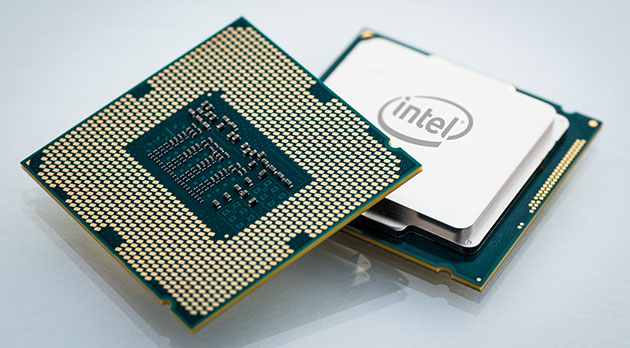Haswell-E Has Arrived
Published:
The first thing worth mentioning (and if you know anything about Intel you’ll know what it’s going to be) is that Haswell-E uses a new socket. So any hope of a drop-in upgrade can be put to bed straight away. The new Haswell-E CPUs use the new LGA 2011-v3 socket. The pin-count and arrangement remain exactly the same, but are electrically incompatible. As with other socket 2011 variants, 2011-v3 is keyed in such a way to prevent incompatible CPUs from being placed in the wrong socket. This of course means that if you want a Haswell-E system you need to build one from scratch. The chipset you’re looking for here is the X99, which represents the cutting edge for Haswell-based desktop computers at present.

One of the most significant and visible changes brought about by this new CPU family is the introduction of an octa-core CPU to the desktop PC market. This represents an overall shift that blurs the line between high-end desktop and entry-level workstation CPUs when it comes to multi-threading. What only a little while ago required a dual-socket motherboard and two quad-core Xeons can now be accomplished in a standard, single-socket consumer machine. This might be the start of a real shakeup at the interface between enthusiast-class and lower end Xeon computers. That is, at least until the 14nm Broadwell-based silicon comes to market.
There are currently three Haswell-E parts available:
The flagship Core i7 5960X, with eight cores, sixteen threads and a 3Ghz base clock.
The i7 5930K, with six cores, twelve threads and a 3.5Ghz base clock.
The i7 5820K, with six cores, twelve threads and a 3.3Ghz base clock.
All of these chips are rated for a 140W TDP, so the need for serious cooling is a given. The top CPU has 20MB of cache in total while the other two sport 15MB each. The bottom range chip (relatively speaking of course) has 28 PCI-E lanes while the other two have 40. Prices range between an (estimated) $999 for the eight-core unit down to $389 for the 5820K.
The other big change is the move from dual-channel DDR-3 to quad-channel DDR-4. That’s probably one of the main reasons a new socket was necessary, as the memory controller resides on the CPU die itself. Intel claims that the 5960X, when compared to the old i7 4960X, performs 20% faster in 4K video editing, 32% faster in 3D rendering and 14% faster in video game physics and AI. That might not seems like a huge leap, but considering how powerful the 4960X is, these figures represent significant increases in absolute processing power and brings system performance in line with lower-end Xeon-based workstations that end up being significantly more expense when the final bill comes.
The new Broadwell-EP architecture which is scheduled for release late in 2014, will also be socket 2011-v3, which presumable means that building a Haswell-E system now leaves an upgrade path open to Broadwell-EP CPUs a little further down the line. Broadwell is rumoured to be a 14nm, 16-core (!), 32-thread design with a max TDP of 160W. That’s something that makes building a Haswell-E system now a very enticing proposition.
These Haswell-E chips are certainly beastly, but the new X99 chipset also represents a long-overdue update for connectivity. The X99 supports:
Up to 5 USB 3 ports
8 USB 2 ports.
8 PCIe 3.0 lanes
10 SATA 6Gbps ports
There’s also support for the installation of a Thunderbolt 2 card, depending on whether individual motherboard manufacturers find adding the extra physical connector to be worthwhile. This last addition especially makes it look as if intel is gunning for the workstation market from the other side of the line. Thunderbolt 2 connectivity is not something non-professional users are likely to find useful, so this feature is very revealing with regards to Intel’s overall strategy.
With a socket that will support at least one more generation of cutting edge CPU technology, the long neglected inclusion of USB 3 and 6Gbps to the high-end (following on the X79 Express chipset) and a brand new memory technology, Haswell-E certainly deserves the excitement that it is getting. “Prosumer” level users who want to have a machine that will do double duty as a general purpose work/gaming machine and and entry-level workstation for research and design applications may have found a new champion in the Intel Haswell-E design.
Keep an eye out as TitanUS will be updating many of our most popular machines with Haswell-E technology soon. Reading about these CPUs has been great, but we can’t wait to get some test units in the shop to really see how far we can push the technology.